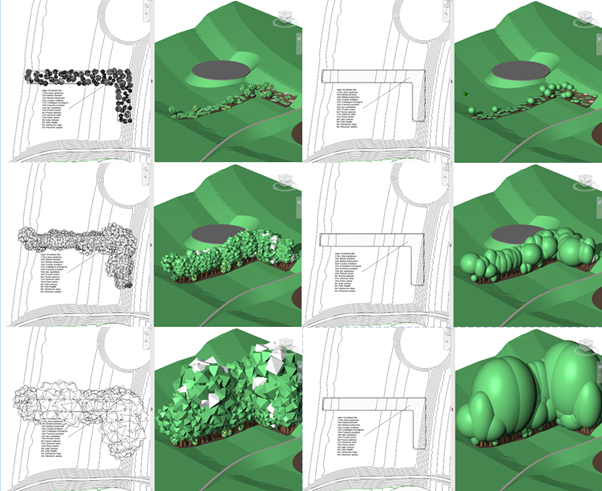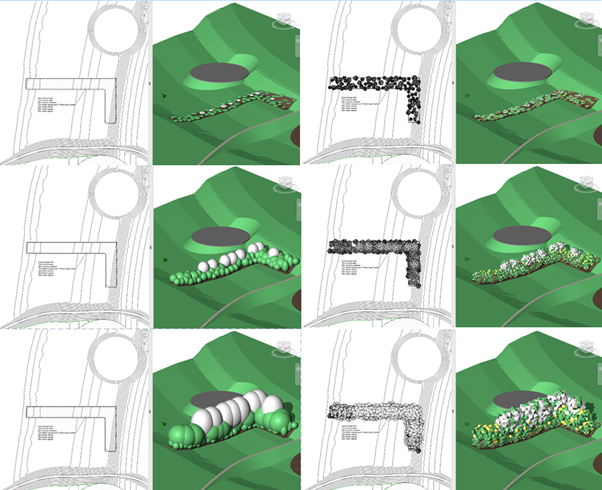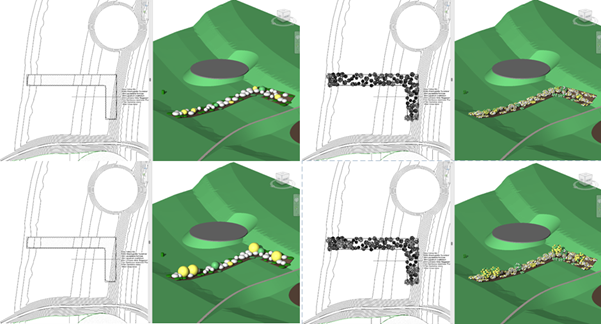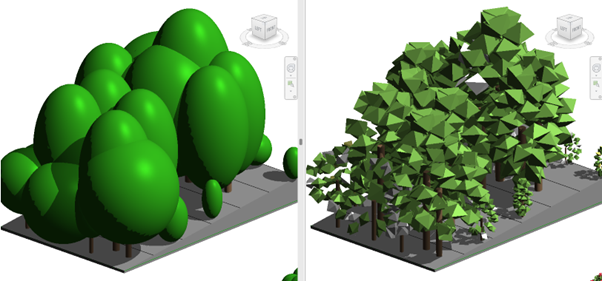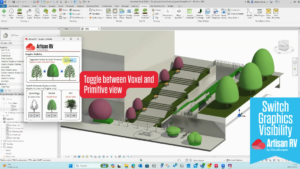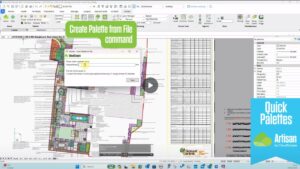Visual impact and flexibility for area planting
Adding clarity, a stronger visual argument for presentations and decision-making and enabling switching level of detail in native Revit, CloudScapes have enhanced the Area Planting tool in CS ArtisanRV in 2025.
Area Planting is considerably more complex to represent graphically in 3 dimensions as planting can appear in groups and masses to represent herbaceous or shrub beds, copses or woodlands; then more complex as an area mix made up of a number of individual components, each with their own specification details, percentage and associated characteristics.
The CS ArtisanRV Area Planting Tool in Revit
The CS ArtisanRV Area Planting tool provides a quick visual representation of plants placed within the selected boundary of the topography, floor etc. Individual components are displayed in primitive or voxel (simulated vegetation) form and respond accurately as planting is aged.
Mix added? The tool automatically positions components of a mix logically by species/variety dependent on ultimate height/spread; i.e. taller plants/trees in the centre, more ground cover towards the edges of an area.
Sophisticated algorithms improve performance – individual area components morph as planting is aged with nested planting groups behaving as organic masses that honour species ultimate height/spread.
Taking careful consideration of proportional height and spread, the tool provides an immediate visual representation of trees with trunks, shrubs with hidden stems and smaller graphics for herbaceous and ground cover varieties.
Currently, graphic options can be toggled within the CS ArtisanRV Graphic Toggling tools.
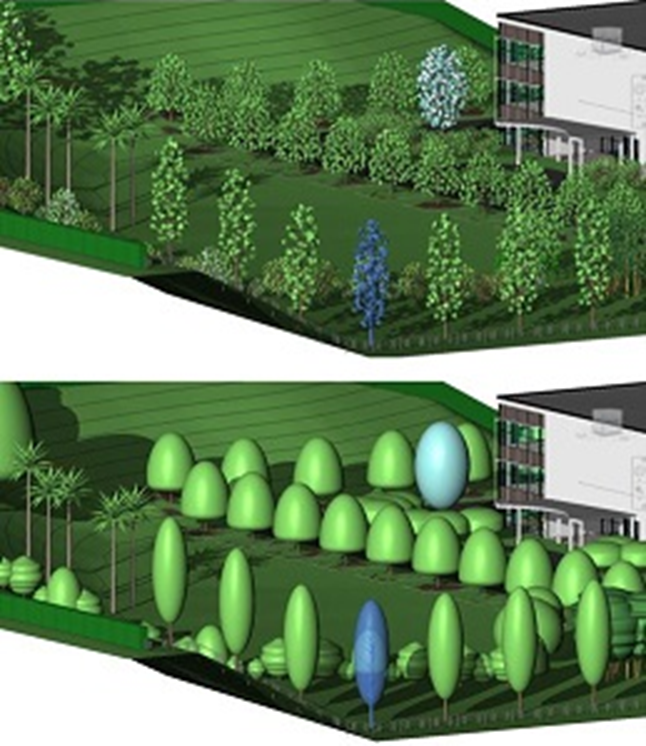
Visibility Options – Primitive and Voxels
The CS ArtisanRV tool in Revit represents planting as sophisticated parametric families with 3D content being informed and constrained by underlying specification, performance and characteristic information.
Users are able to switch between basic (Primitive) and more detailed (Voxel) imagery that simulates vegetation for associated plantings in the model with ‘foliage’ and flower colour automatically being applied by species.
IMAGE: 3D Views of single planting (individual specimens) in CS ArtisanRV: Voxel (above) and Primitive (below)
Area Planting in 3D
Choose to place Area Planting in ‘2D Only’ for efficiency if plan view representation is sufficient. This does not create 3D components in any 3D views for associated area planting.
When a mix is placed, the tool assesses mix components to determine plant order by ultimate height/spread at maturity.
Representations of the largest species are placed centrally, then grading as size diminishes until the smallest species are placed nearer outer boundaries. The representations of plant mix species are randomly placed with space between individual masses (families) to simulate a ‘naturalistic’ look and feel.
IMAGE: 3D Views of Area Planting (Woodland mix) in CS ArtisanRV with larger species massing towards the middle, smaller species towards the boundary: Primitive (above) and Voxel (below)
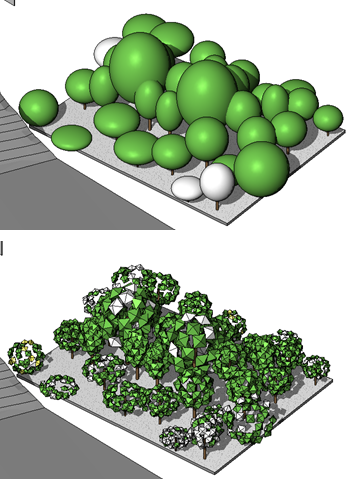
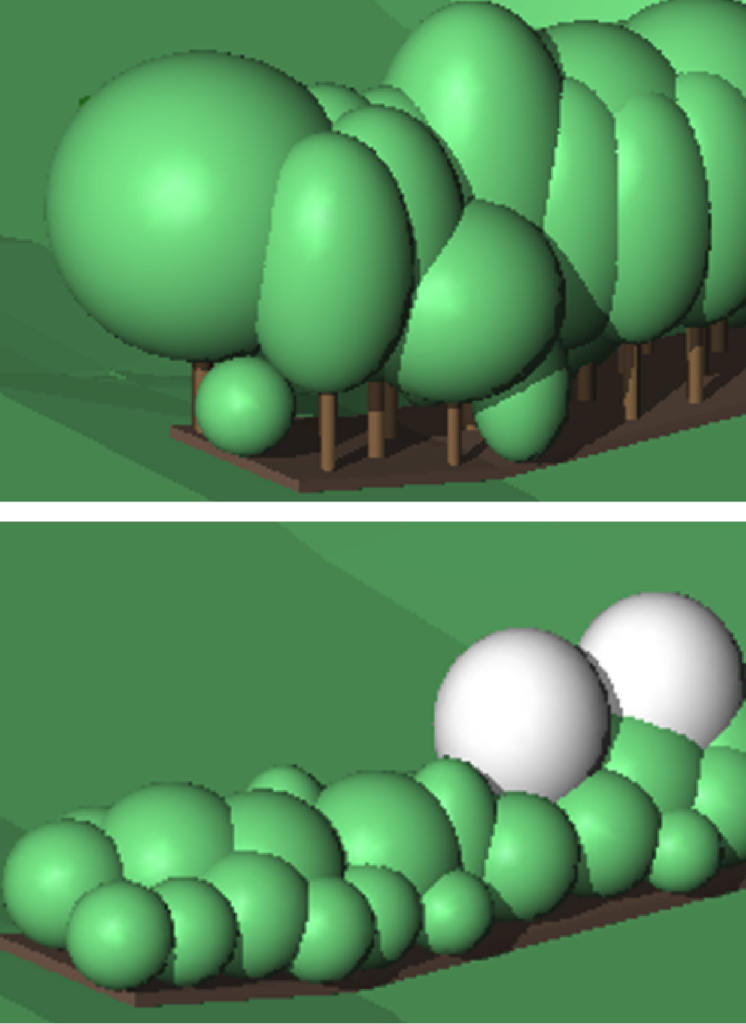
Foliage, Form and Colour
Foliage and flower colouring is automatically applied to the family instance in either Primitive or Voxel view.
Tree instances within mix planting include a central stem and other planting families are furnished to ground.
IMAGE: 3D Views of Area Planting (Trees) in CS ArtisanRV with clear stems shown in Primitive view (above). Foliage and flower colour variations by species (below).
Growth: The 4th Dimension
When it comes to placing 3D planting in Revit, landscape professionals not only have to consider whether they prefer to display components with either primitive or voxel view, but also what size they want the model to portray planting. Unlike all other Revit family components, ‘planting’ changes – i.e. grows – over time, introducing the 4th dimension into modelling!
Within CS ArtisanRV, planting is aged from its original planting specification when delivered, until the species ultimate height/spread and based on the number of years to maturity.
IMAGE: 3D Views of Area Planting (Woodland mix) in CS ArtisanRV aged over time (4th dimension), showing Voxels (left column) and Primitives (right column): 0 years (top), 15 years (middle) and 40 years (bottom)
